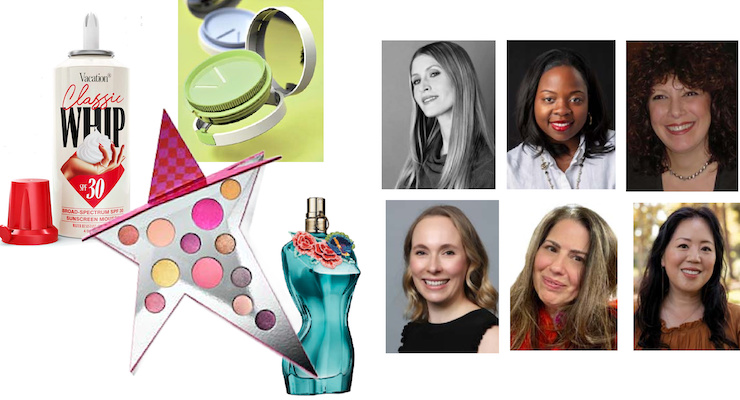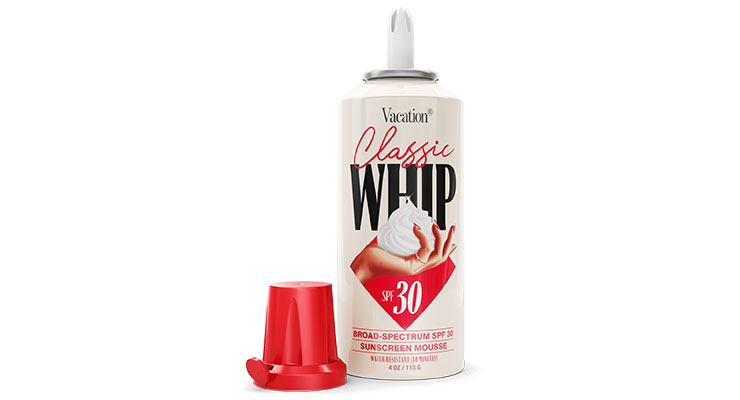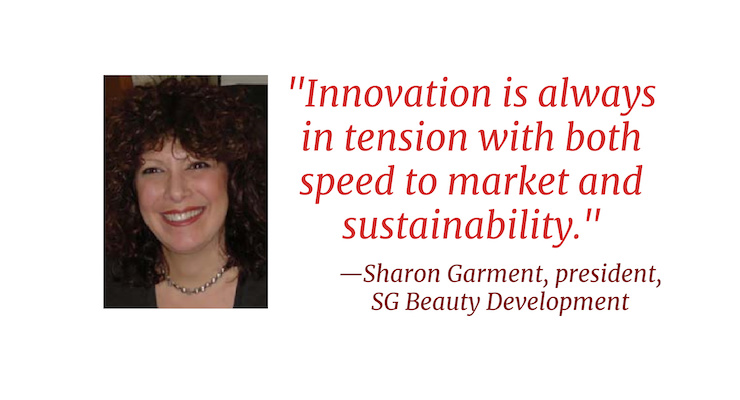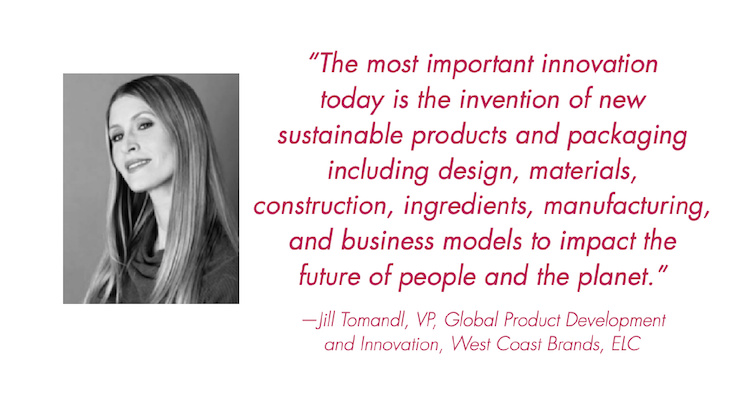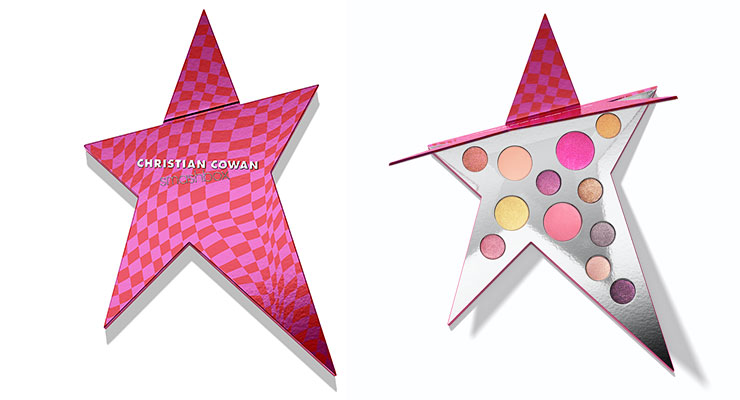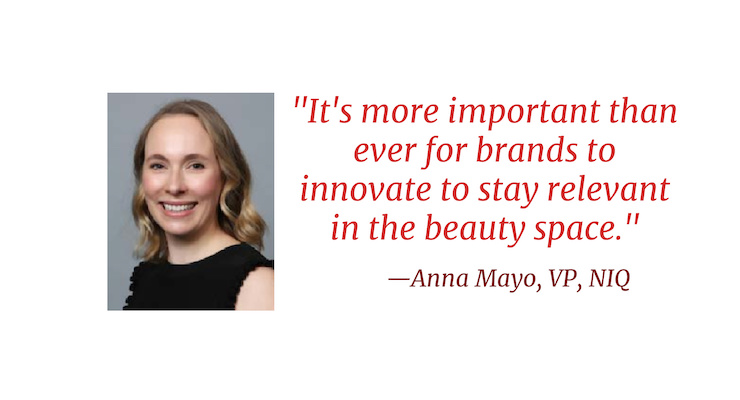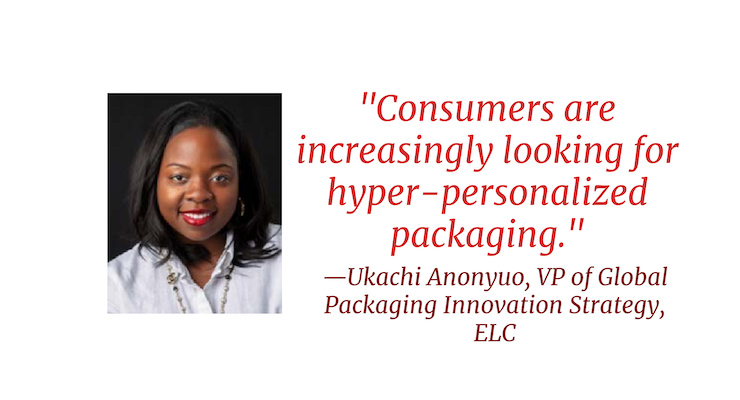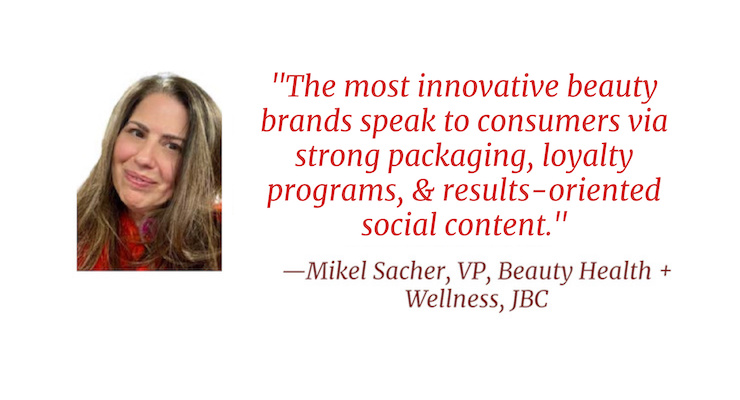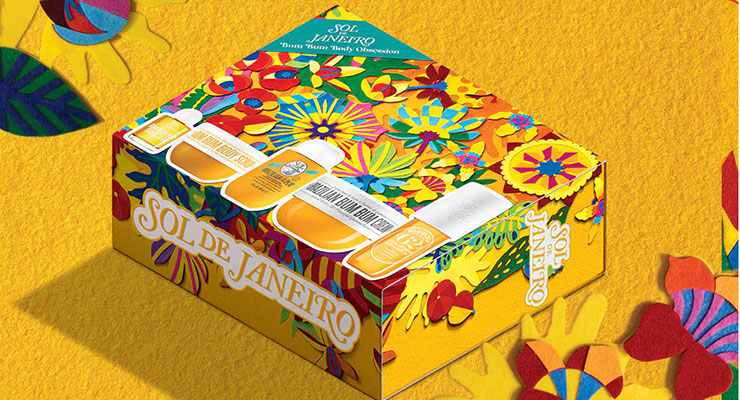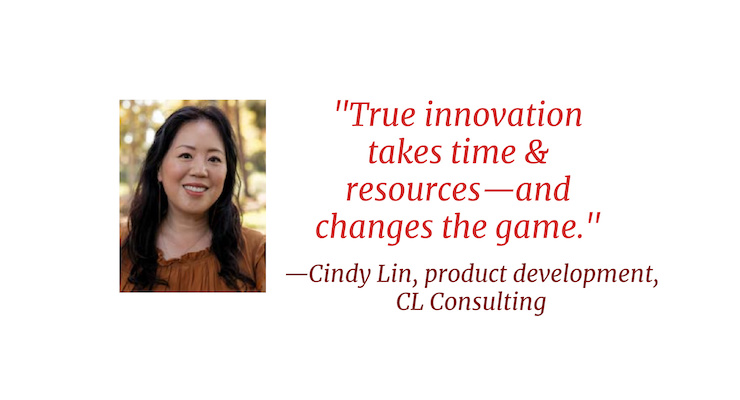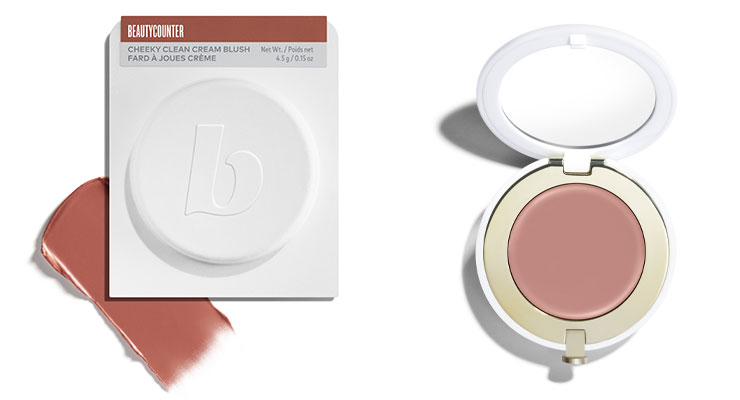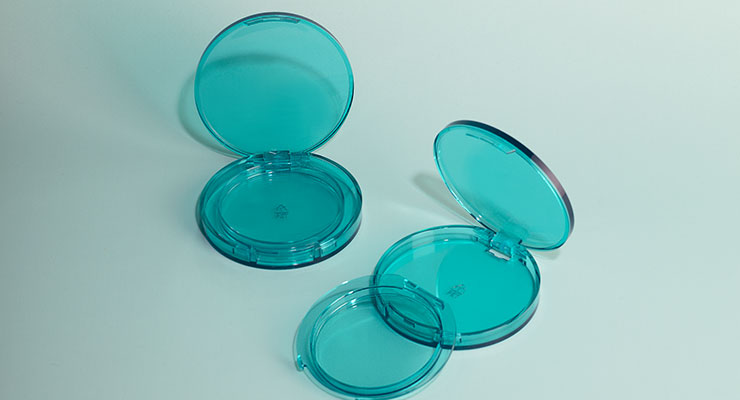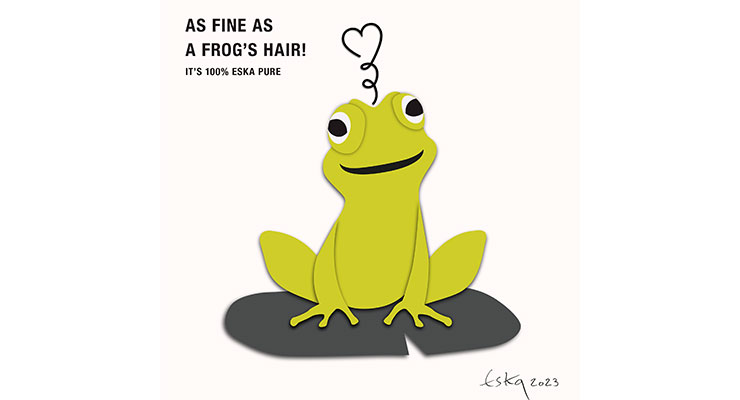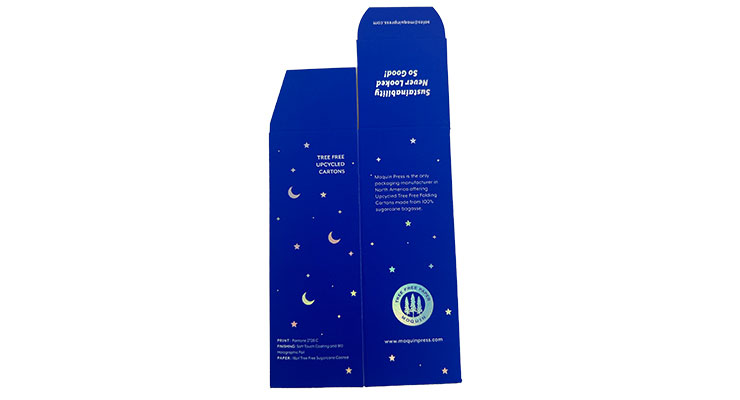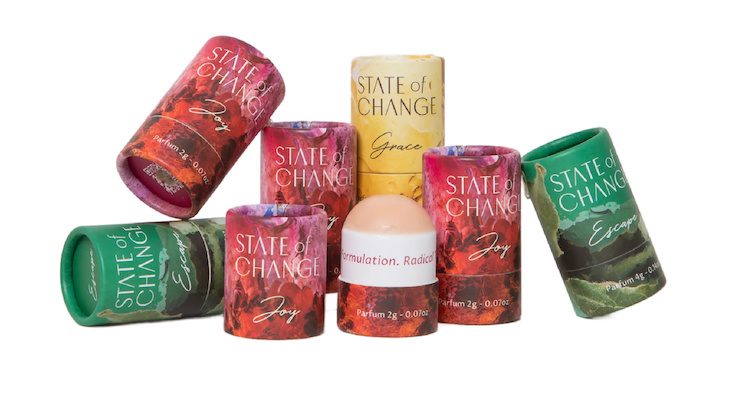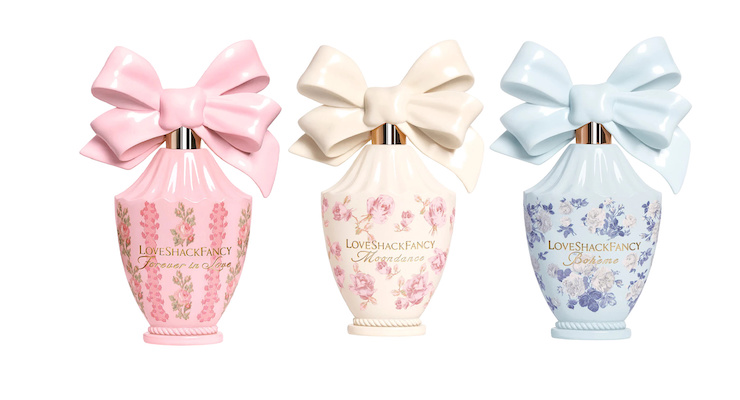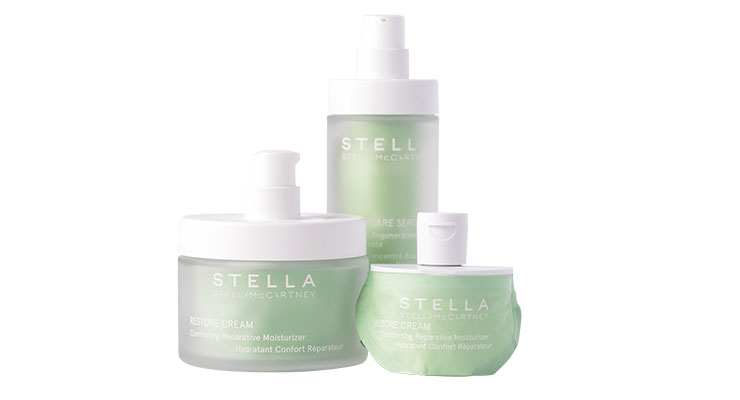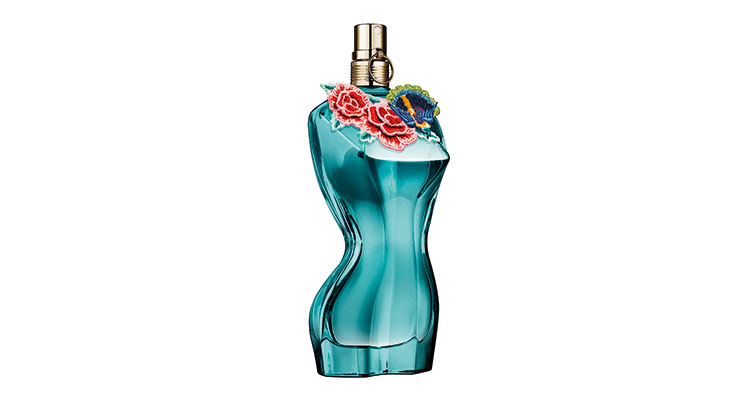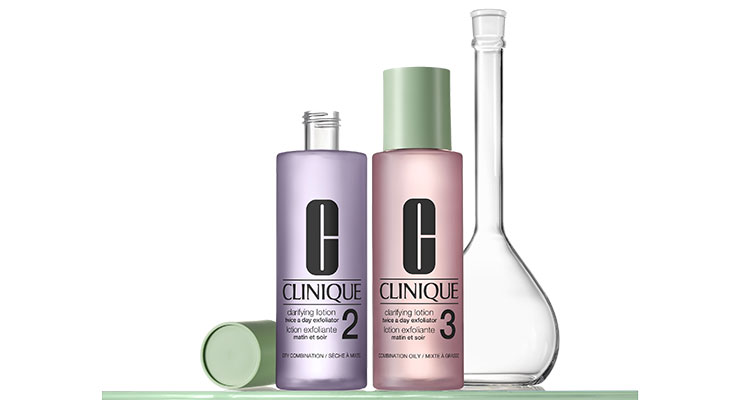Jamie Matusow, Editor-in-Chief11.29.23
Beauty’s road to innovative packaging has become increasingly crisscrossed with the path to circularity and global eco-consciousness. With competition stronger than ever, cosmetic brands face multiple challenges, from keeping up with speed to market and ever-growing TikTok and AI trends, to meeting demand for transparency and sustainability.
From materials used to color applied, differentiation is key—and packaging has taken on an even more elevated role as a means to convey a compelling story. And both global and indie brands continue to rely on industry suppliers for a leading edge.
In her column for Beauty Packaging, “4 Key Ways Innovation Is Changing the Beauty Industry,” Anna Mayo, vice president beauty vertical, NIQ, says, “While we all love the thrill of trying and discovering new beauty products, innovation is more than just fun and games.” She explains: “Innovation is crucial to brand success; with a constantly evolving marketplace, beauty brands especially need to differentiate themselves to stand out in a busy industry.”
According to the NIQ BASES report, “with the constant evolution of shoppers’ wants and needs, it’s more important than ever for brands to innovate, not only on behalf of consumers, but also to stay relevant in the beauty space.”
In addition, the NIQ research found that new innovations had shown a 19% decline in the beauty and personal care space. “Those who continued to innovate over this time were rewarded with outsized gains, and were 2.9 times more likely to grow sales than those who pulled back,” says Mayo. “In the face of change, evolution endures, and companies who prioritize innovation seem to be leading the pack.”
Sharon Garment, president, SG Beauty Development, Inc., says she has seen an evolution in the term “innovative packaging.” The beauty industry veteran tells Beauty Packaging that the meaning of innovation has changed, and continues to evolve because of the “viral nature of development now. There are so many new factors that influence and dominate the process, many of which historically did not exist.” Before Internet, says Garment, “there was only classic advertising as a way to convey newness or novelty but now everything has to be viewed through a new filter in order to resonate with a new audience.”
“Developing an ‘innovative’ package or product was once solely focused on performance and user experience,” says Garment, “whereas now, ‘novelty’ and catchiness and engagement drive the experience.”
Ultimately, says Garment: “Innovation is always in tension with both speed to market and scalability.”
Novelty for the Sake of Novelty?
Novelty for the sake of novelty, does not always translate to a long-term commitment to a brand, explains Garment. “The experience now must relate on a much more visceral level to the consumer where it can then have a halo effect for the rest of the product portfolio.”As an example, Garment points to Vacation Whipped Sunscreen, “which hit all the right buttons for novelty and engagement, but the overall brand ethos and identity came through and likely influenced purchase across other products.”
Vacation says their mission was “to make sunscreen so fun that you’ll actually want to wear it, and thus Classic Whip SPF 30 was born.” According to the brand, they “went to great lengths to imitate everything from the look and feel to the unmistakable ‘whooshing’ noise you’d expect from a can of whipped cream.”
Simply remove the cap, invert the can, and watch as a perfect star-shaped mountain of sunscreen foams in your hand from the authentic “tilt valve” actuator. The brand says: “It’s an uncanny replication of whipped cream in every sense except the taste.” (Classic Whip is to be enjoyed externally only!).
Visual Impact Can Be Key
While breakthrough ideas can come from anywhere, there can be many elements defining innovation, according to Jill Tomandl, vice president, Global Product Development and Innovation, West Coast Brands, Estée Lauder Companies.Tomandl points to sensorial experiences.
She tells Beauty Packaging: “Visual impact is important for products and packaging to stand out in social media and online. Emotional connection through storytelling, flavor, fragrance, sound, and texture create sensorial experiences for consumers. Consumer insights help to identify problem-solving opportunities. Changing regulations, speed-to-market and cost also influence innovation.”
Smashbox, one of the Lauder brands Tomandl directs, recently collaborated with fashion designer, Christian Cowan for the limited-edition Holiday Collection and his runway show at Paris Fashion Week.
Smashbox’s Breakout Star Eye Shadow Palette was designed with Christian Cowan’s signature checkerboard morphed into an Op Art pattern and embossed logos. The compact was constructed with FSC-certified paperboard in order to create the unique star shape with minimal tooling for a limited-edition product.
“Christian is so creative and it’s fun to collaborate with him,” says Tomandl. “There is so much artistic synergy between the two.”
Personalization & Customization
Personalization and customization are also elements that brands strive for in an attempt to woo customers.Ukachi Anonyuo, vice president, Global Packaging Innovation Strategy and Portfolio Management, at The Estée Lauder Companies, tells Beauty Packaging: “Consumers are increasingly looking for hyper-personalized packaging solutions that are not only unique to them, but also allow for their own creativity and imagination to come to life in the package.”
Anonyuo explains: “Across The Estée Lauder Companies’ portfolio of brands, we’re exploring how to best leverage technologies like AI and sophisticated printing and labeling to design luxury packaging that brings consumers along on the development journey and enhances their overall product experience. We’re also seeing a continued push for sustainability to be embedded in the end-to-end packaging experience with a push toward more refillable and reuse solutions as well as incorporating nature into packaging solutions.”
Adapting to Trends
Brands that listen and respond to their customers are the ones that spell out innovation for Mikel Sacher, vice president, global partnerships, Beauty Health + Wellness, JBC.She tells Beauty Packaging, “Coming from a research background, I always try to look for brands that are adapting to the trends and meeting consumer demands. The most innovative brands are speaking to consumers directly via stronger packaging, loyalty programs, and content that illustrate the texture and results of these products on Instagram, Tik-Tok, and other social platforms. I am super wowed when clients react to fan responses with more trial sizes—I recall this happening with Peter Thomas Roth’s eye cream a while back and was so impressed with their response, which attracts more new customers, and the name of the game is acquisition and retention!”
Gen Z Influencers
Sacher says people are looking for ways to be sustainable—whether the products have the right ingredients, offer refills or give multi-tasking solutions to help justify the rising cost of investment purchases and staples alike.When looking at Gen-Z shoppers, Sacher says, “I like looking at TikTok, and think Ulta, Target and Walmart, which showcase a lot of what is in demand. Some of the younger generations are obsessing over brands like Sol de Janeiro, which has a very alluring and recognizable proprietary scent, or K Beauty’s cult-favorite Banila Co is rocking on Amazon and on the shelf at Ulta. Both have strong modern typography that is easy to read, differentiate SKUs with color and have global branding stories.”
Going Green
Undeniably, much of the beauty industry is currently going through a prolonged phase of meeting the consumer preference for clean and green.Cindy Lin, product development consultant, CL Beauty Consulting, tells Beauty Packaging, “Let’s face it—‘Clean’ is now table stakes, so the bar is now raised, and brands need to offer more in order to be truly innovative. True innovation takes time and resources, and changes the game.”
Lin says this is necessary in order to keep up with speed-to-market, so innovation can be defined in other ways: “Sustainability is innovation—such as socially responsible sourcing, ethically harvested materials and upcycled packaging; Innovation is also cyclical: I consistently see concepts that have been done before, but it’s brand new to the next gen, and thus marketing/positioning becomes innovative. By doing the innovative storytelling behind the product, we can still launch skus on time and stay relevant; while saving some blue-sky projects for true long-term innovation.”
Lin worked with the Beautycounter team to develop an (estimated) 100% PCR refillable compact that has a chic, vintage-inspired push-button clasp, and the refills come in an innovative clamshell that’s made with bagasse (sugarcane pulp) which is more renewable than paper.
Checking In with Cosmetic Packaging Suppliers
To get manufacturers’ takes on what’s currently “hot” in innovative packaging—what their latest developments are and what both indie and global brands are requesting from them—Beauty Packaging reached out to a number of leading cosmetic industry suppliers.
Sustainable Packaging Is a Key Driver
At GPI Beauty, Maria Marshall, general manager, tells Beauty Packaging, “In today’s beauty market, innovation is a dynamic blend of product evolution, sustainability, personalization, and the seamless integration of technology.” She says, “This comprehensive approach responds to the ever-changing preferences and values of consumers while also addressing pressing environmental and societal concerns.“While originality remains essential,” explains Marshall, “beauty consumers now place greater emphasis on additional factors, such as sustainable packaging materials, clean formulations, and the development of inclusive, multi-functional products. These shifting priorities underscore the industry’s adaptability and the evolving tastes of beauty consumers.”
Asked about what trends she is seeing in the industry, Marshall says, “Undoubtedly, the beauty packaging industry is in a constant state of evolution, aligning with shifting consumer preferences and emerging market trends. A prominent and enduring trend is the strong emphasis on sustainability.” She finds that brands are increasingly seeking recyclable materials, alternatives to traditional plastics, clean formulas, and innovative ingredients that promote sustainability across their entire supply chains.
At Clement Packaging, the focus on innovation derives from sustainability. Helen Yang, founder & CEO, tells Beauty Packaging, “In the sustainable beauty space that I’m in, I would define innovation as any incremental improvement in carbon footprint or reducing waste. A sustainable choice doesn’t always need to be a complete brand overhaul. Brands can innovate through small actions such as light-weighting their existing packaging, changing the color of a component so that it’s more easily recyclable, or switching to a compostable material for products that are too small to recycle. Innovations in today’s sustainability space can be quietly clever or loud and unique.”
Clement’s primary innovation is their plant-based, compostable material that Yang says serves as a 1:1 alternative to plastic (especially for components that are too small or too pigmented to recycle). She says that they use locally-sourced upcycled bamboo to improve the compostability of their bio-resins.
Clement worked with BREAD Beauty Supply on a plant-based, compostable jar for their hair cream. Yang says, “It’s definitely a first in the haircare space. This product also showcases how laser etching works perfectly to decorate sustainable packaging since it doesn’t add any ink, pigments, adhesives, or generate VOCs.”
Brand Requests: What's Popular in Beauty Packaging?
Beauty industry suppliers are always working on new innovations—sustainable and otherwise—in their efforts for packaging breakthroughs that will answer brands’ needs.What have brands been requesting?
Estée Lauder’s Tomandl tells Beauty Packaging, “Brands are interested in components that improve product performance and the consumer experience by enhancing application, dispensing, and ease of use. Interesting component shapes create differentiation and brand recognition.”Lin says brands are in quest of “a new molecule, a new material, a revolutionary package.” She adds, “The current market is saturated with brands, so I am also seeing a trend of ‘less is more’ launches.”
Lin also says quantities have come into play more. She explains, “We are in the midst of an indie revolution, and brands want low MOQs for packaging.” She is hearing brand requests for sleek, flat, or fluid/organic shapes with a lot of surface area for decoration; low-profile, squat jars and tottles.
For color cosmetics, Lin is seeing requests for integrated applicators that eliminate the need for a spatula, sponge or brush. Sustainability can still be a priority. “Brands also have declared sustainability goals to meet, and that means reusable, recyclable, refillable, or even compostable, in addition to PCR. “That’s a tall order,” says Lin, “but it’s what we’re looking for. I hope this helps to redefine luxury, expand refills into other categories, and ultimately teach consumers about circularity.”
Mono-Materials
Mono-material packaging has become top of mind for many brands and suppliers as a simplified way for consumers to recycle by just throwing everything in one bin, with no need to separate components. Mono-materials have entered the scene in everything from compacts to bottles, jars to caps.Eastman and ICONS|ICS recently announced the launch of an innovative mono-material cosmetic compact, which they say “pushes the boundaries of eco-friendly packaging.” The compact is the result of a co-innovation initiative between the companies, and showcases their commitment to sustainable packaging solutions.
The mono-material compact is made entirely from Eastman Cristal One Renew, an RIC1 resin with 100% certified recycled content (recycled content allocated via ISCC-certified mass balance approach). The elimination of traditional metal hinges and pins greatly improves the recyclability of the compact while its refillable design allows consumers to easily replenish their cosmetic products.
Tara Cary, global cosmetics and personal care packaging manager at Eastman, says, “We are excited to have collaborated with ICONS|ICS on this innovative project. The integration of design and materials expertise allowed us to create a game-changing solution that addresses the growing consumer demand for recycled content and recyclability in packaging in a refillable application they can reuse again and again.”
Paper & Board
Paper packaging has long been considered a sustainable choice—and new, innovative composites, certifications and decorating techniques have accelerated its use for a multitude of packaging options from bottles to mailers.At Eska, Sophie Greff, RDM group marketing director, says innovation has taken on “a new dimension.” This, she says, is driven by various criteria such as speed-to-market, sustainability, material choices, online sales, and the ‘Instagrammable’ factor. While unique and eye-catching designs remain crucial, she tells Beauty Packaging, “Beauty brands are now placing a significant emphasis on eco-conscious solutions and circularity.”
Greff says, “Our customers are increasingly committed to circularity, recognizing solid board as a noble, pure, and ecological material that allows them to create eco-designed products that are not only environmentally responsible but also desirable. This material offers limitless creative possibilities, making it an attractive choice for beauty packaging.”
In response to the growing demand for circular packaging and zero waste targets, Eska has introduced ESKA PURE, “a premium, mass-colored solid board made from 100% recycled fibers, ideal for the luxury segment. It is available in five colors.
The uniqueness of the board, according to Greff, “lies in its texture and ability to facilitate precise cut-outs for packaging that combines modernity, ecology, and refinement. Comprising three layers, it offers optimal rigidity for product protection and design flexibility. It can also be used to craft sustainable inserts, replacing plastic solutions.” It also features a direct printing capability and mass coloration, eliminating the need for cover paper.
Bryan Moquin, general manager at Moquin Press, says the concept of innovation has evolved based on consumer demands for sustainability and corporate responsibility—and brands are searching for the most sustainable packaging they can afford. This trend, he says, is driven by “a more inquisitive shopper demanding transparency in the life cycle of the products being purchased, forcing brands and procurement teams to ask themselves ‘How do we make our products more earth-conscious?’ ”
In this vein, Moquin says brands and designers are looking to maintain uniqueness while honoring sustainable practices. The company is seeing some of its customers gravitate toward more sustainable embellishments such as water-based soft-touch coatings as well as embossing in their secondary packaging.
Post-consumer waste papers as well as papers made of alternative fibers or upcycled fibers such as sugarcane bagasse are taking off, says Moquin. “Some brands we work with manufacture products solely from recycled goods such as water bottles so when we approach them with upcycled packaging as an alternative, it is a no-brainer for them.”
Moquin says that their Tree Free Upcycled packaging is “the most innovative we have in the market.” The paperboard is made from bagasse—the byproduct of sugarcane production.
“We give a second life to a material that would otherwise be burned, reducing the environmental impact of the packaging, explains Moquin. “Our Tree Free Upcycled Packaging is available in white/coated and natural/uncoated options and both pair beautifully with all of our premium finishes from spot UV to foils. Moreover, this paperboard is recyclable, compostable, and biodegradable.”
Clean Age products are gender-inclusive, cruelty-free, vegan, and sold in ‘responsibly sourced’ paper packaging, some in paper tubes and others in cartons resembling heavy cream. Walmart recently awarded Clean Age, which makes personal care products for GenZ—including deodorant and toothpaste tabs—with the company’s Golden Ticket, the highest award in their startup pitch competition. More than 4,500 entrepreneurs applied, and over 13,000 products were registered to compete.
State of Change is a new solid perfume brand with three scents. The brand says it provides full transparency in formula, supply chain and more. Typical perfumes state “fragrance” on the label and can represent 300+ ingredients that are not disclosed. Not the case with State of Change. Along with 100% recyclable (paper) packaging, “clean skin-loving functional ingredients, the brand says it has nothing to hide and differentiates itself by disclosing all elements from start to finish.” The solid fragrances are housed in push-up FSC-certified paper tubes for sustainability purposes and to circumvent people having to stick their fingers in the formulas. Refills are in the pipeline for next year.
Releaf Paper, a pioneering producer of eco-friendly paper products and packaging from fallen leaves, has launched the “Fallen Leaf Collection” and “Natural Kraft Collection.” This innovative line of products, including eco-friendly bags, paper sheets, and more, is designed to inspire eco-conscious consumers with their sustainable craftsmanship and exceptional features.
Alexander Sobolenko, CEO and co-founder of Releaf Paper, says, “These collections showcase our dedication to finding eco-friendly alternatives that are both beautiful and functional. We’ve listened to the voices of our customers and have carefully designed these products to meet their most popular requests. Our clients wanted sustainable, sturdy, and versatile paper products, and we’ve delivered precisely that with these collections.”
User-Friendly, On-the-Go Packaging
Samhwa, a leader in cushion foundation compacts, has introduced a new innovative concept for foundation. Tony Son, president, Samhwa USA says he sees a trend in brands putting a strong focus on innovative user-friendly products. He tells Beauty Packaging, “The new generation of consumers seeks convenience and portability, fewer steps to their skincare routine, and being able to care for makeup or skincare needs on the go without sacrificing quality. To that end, he says, “Brands are pushing for products that simplify the application of cosmetics.”Son says that portable, refillable and hands-free are not the only features becoming mandatory options for packaging—but also reduced packaging waste, functional design for easy refill and faster neater hands-free applications all continue to be key drivers in Samhwa product innovation and R&D.
Samhwa recently developed the MHK Cushion Compact, a new innovative concept for foundation—which Son describes as “a groundbreaking foundation compact designed for the application of cream foundation.” The innovation of this product is that it is a cushion, but also features the portability of a cream foundation that can be applied via a cushion. The grinding technology allows for the cream foundation to travel as a solid but be applied as a liquid.
Beauty Brands Strive for 'Luxe, Sustainable, and WOW'
From touches of unique color, to custom refillables, to premium materials—and often, a clear sustainability aspect—many prestige brands are taking advantage of soaring global sales and ramping up their packaging in a market currently driven by small luxuries.Lauder’s Tomandl says, “I love seeing the refillable lipstick trend in the luxury makeup segment. I hope this helps to redefine luxury, expand refills into other categories, and ultimately teach consumers about circularity.”
Sacher comments, “Brands are looking for ways to pop on the shelf and using more colors today like bold yellows on the Trinny London logo, products and display units, and bright hues to differentiate body serums by Maelys Cosmetics. I am noticing decorated packaging on Rojas Candles to make fragrances stand out, whimsical animals on Hourglass packaging, and Rose Gold shining brightly on Patrik Ta’s eye palettes.
At premium packaging manufacturer AWANTYS, Eric Bigotte, senior sales manager France & Southern Europe, tells Beauty Packaging, “Right now, and after Covid, innovation has become ‘the must-have’ in the beauty world. Brands are looking for new natural materials, sustainable, ready to launch, with great effect.”
Bigotte tells Beauty Packaging that brands—currently luxe fragrance brands—are seeking “a true partner that can propose new material, decoration, sizes without losing the DNA of the brand (meaning keeping the color and aspect code). In addition, he says, “We need to think larger than our world of cosmetics, and the industry is looking at us to propose ideas and test and proof materials from other industries that can be applied (such as new materials from mushrooms, or from seaweed, for example).”
AWANTYS has been focusing on materials for many years, and has launched several options, including marble and stone packaging and non-plastic jars with porcelain—and is now working on a carbon option.
Recently, AWANTYS worked with LVMH Loewe to develop a genuine marble cap for their new launch this year.
Another feat: “The cap in 5 pieces (a mono-material) for LoveShackFancy was a great development with our customer to keep the bow shape without any compromise, and dress the beautiful bottle,” says Bigotte.
The innovative and striking luxe fragrance STELLA by Stella McCartney premiered in an airless pouch in glass with a reusable pump, achieved by Texen. The eco-design challenge was said to have reinvented refillable airless packaging.
McCartney’s new range of natural, vegan, effective and sustainable skincare, called Alter-Care was developed in partnership with LVMH’s beauty division. It is made up of three products: Reset cleanser, Alter-Care serum and Restore moisturizing cream. Each step in the product life cycle was studied in order to minimize its environmental impact: the formulas are natural, clean, vegan and cruelty free. The packaging is eco-designed, recyclable and refillable.
Alter-Care Serum and the Restore moisturizing cream are travel-friendly and refillable.
Each contains a 50ml refill housed inside a glass bottle elegantly topped with an airless pump that allows every last drop of the product to be used. The refills are also designed for on-the-go use. They can be removed from their bottle and easily transported thanks to their dispensing caps, guaranteeing ease of usage and a reliable seal. In whatever way they are used, these packs adhere to the brand’s expectations in terms of eco-design, efficiency and esthetics.
Texen acquired PRP’s flexible packaging activity in February 2022. The successful collaboration between their experts and LVMH’s teams assured the success of this innovative project.
Texen makes the refills using a recyclable multilayer decorated film, ensuring the required barrier effect for the optimum protection of these new, ultra-clean formulas. It injects the pack then solders the neck onto the pouch on which the dispensing cap fits, creating refills that are dissociable for on-the-go use. Each component used in this new type of packaging is recyclable, and ISCC+ certified.
KILIAN PARIS, from The Estée Lauder Companies, is also a luxury fragrance designed with the environment in mind as part of its founding principles and practices.
When Kilian Hennessy created the brand in 2007, he reinstated refillable perfume bottles, once the norm for fine fragrance, with the intention to put luxury fragrance back on its pedestal recalling a time in which a perfume bottle was kept and refilled for life, “privileging beautiful, heritage objects of desire.” All KILIAN PARIS perfume bottles, carafes or travel sprays are bought once and endlessly refillable with easy-to-use refills which are sold separately in reduced and recyclable packaging. The 50ml refill allows –51% of glass production and 51% of weight reduction compared to a 50ml refillable perfume bottle.
The newly released 100ml refill allows -57% of glass production and 55% of weight reduction compared to two 50ml refillable fragrances.
PURE TRADE produced the whimsical luxe packaging for La Belle Fleur Terrible by Jean-Paul Gaultier. The supplier adorned the blue bottle of La Belle Fleur Terrible by Jean-Paul Gaultier with embroidery designed in two layers and four parts. The technical challenge was to sew the different pieces together, with a constant orientation for “homogeneous positioning.”
High-Tech Decorations for Packaging
At Roctool, Remo Soligon, VP of sales, describes innovation in the beauty world as the “need to go beyond our clients’ needs and dare to take the initiative to inspire and surprise them.” Roctool’s key activities used to be focused on the automotive industry, and Solignon tells Beauty Packaging, “It’s thrilling to see that some of our sustainable decoration techniques have been successfully transferred to the beauty world. This brings a new approach to packaging in terms of processing and perceived value.”As an eco-molding and technology solution provider, Roctool is frequently sought after by beauty brands for new packaging concepts that couldn’t be achieved using traditional processes, according to Solignon. These concepts can include a new texture that delivers a unique ‘wow’ sensation in the market, a new environmentally friendly material, or a new design that enhances the overall experience.
Solignon says Roctool sees the growing importance of sustainability in packaging, such as the increasing usage of recycled materials (such as rPET), reduced secondary operations, and simplified processes that do not require painting phases after the part’s molding. “Sustainability will remain one of the key priorities, and Roctool continues to innovate with our clients through new ways of processing. For Roctool, innovation lies in the combined solution of innovative materials, new textures, and eco-responsible molding to push all boundaries.”
Clinique’s premium, eco-conscious packaging was powered by Roctool’s induction technology, which Solignon says “has revolutionized sustainability. We’ve eradicated the secondary ‘spray’ process, leading to a remarkable 10-15% reduction in waste throughout production.”
Innovation Ahead
It seems clear that there will be a growing interest in innovative packaging and in sustainable solutions in the years ahead. But feats in decoration, sizing, color, ergonomics, equality, materials, and more will also continue to make brands stand out.NIQ’s Mayo concludes, “The beauty industry is becoming increasingly competitive, with new brands and products constantly emerging. In addition, consumers’ expectations and preferences are also rapidly evolving.
“Ultimately,” says Mayo, “brands that innovate are more likely to succeed in the long run, and those who don’t, risk losing market share to more dynamic competitors. Now more than ever, it’s important for beauty brands to innovate to stay relevant in an ever-changing consumer landscape.”
Sustainability remains a challenge. According to Garment, “The challenge right now is that there is such a push for recyclable, sustainable materials, yet few have been fully proven and often their limitations do not allow them to support across categories [for example, many of the new materials being explored can only support anhydrous formulas, lest they dissolve unto themselves] so adopting them cannot be comprehensive—presenting challenges with marketing and messaging. Additionally, with new materials, aside from the requisite testing, there are significant supply chain challenges that will influence a willingness to embrace these new options.”
At GPI Beauty, Marshall says “The concept of multi-functional packaging, featuring two-in-one products and customizable, refillable palettes for on-the-go beauty routines, continues to gain traction. The beauty industry is poised for a future marked by eco-conscious innovation, and brands that can effectively harness these trends are likely to lead the way.”
Emerging technologies are also expected to strongly impact innovation in the beauty industry. According to global market research firm Mintel, “Artificial intelligence will transform the beauty industry by making it more personalized, efficient and effective, but governance and transparency will be critical to growth.”
Packaging, however imagined, will remain essential to cosmetic sales.
Lauder’s Tomandl predicts: “Future innovation in cosmetic packaging will be focused on new sustainable materials, material reduction, new construction, and new business models for refills, recycling, reuse, and minimizing waste. Package design is extremely important to change the perception of luxury packaging and create tasteful components for consumers. Many components need to be retooled or replaced due to material regulations, so hopefully this is a creative period for the industry.
“My vision is to create packaging as a collectable, refillable, work of art that can be used over generations,” says Tomandl.

